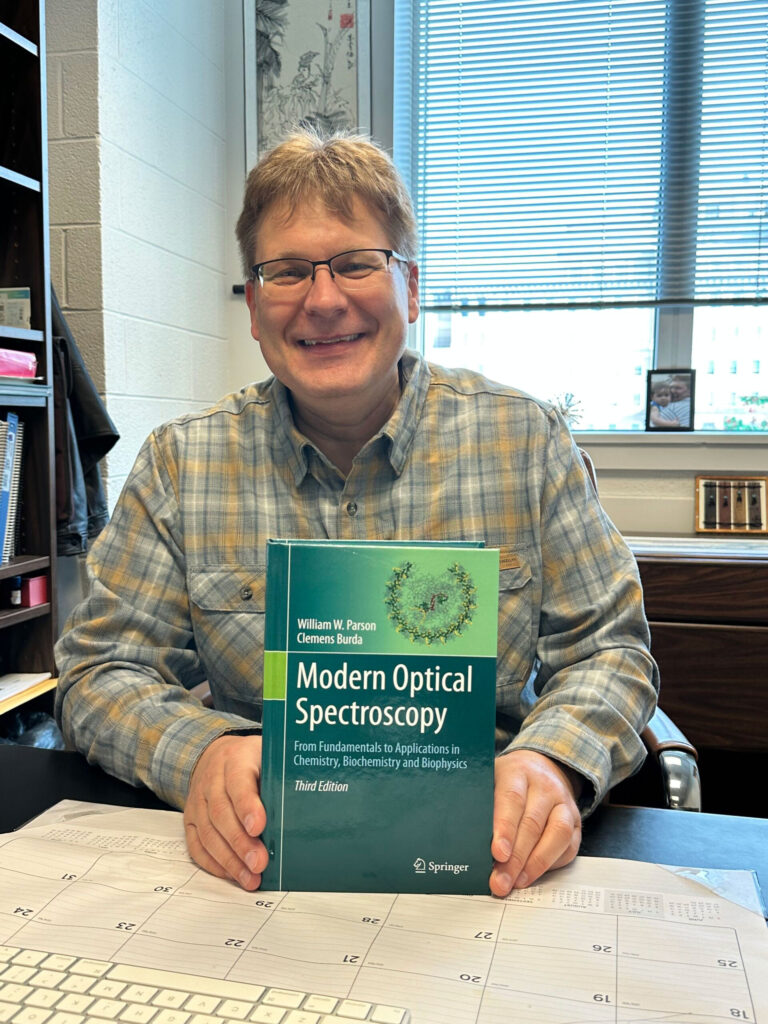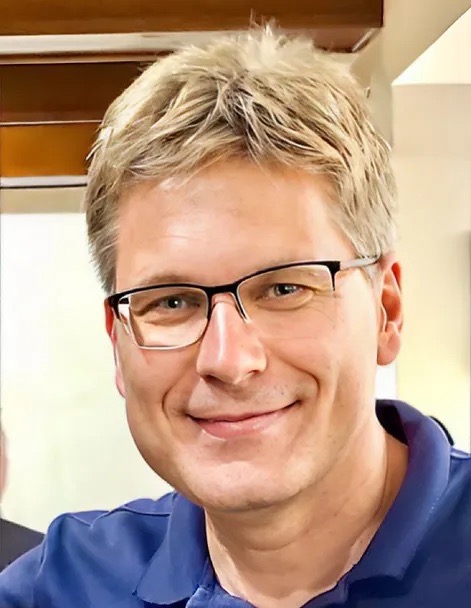Distinctive lifetime honor recognizes scientists, engineers and innovators for achievements across disciplines
Even as a boy growing up in a small village in southern Germany, Clemens Burda was fascinated with colors—and especially how colors mixed and separated while painting.
“Is this a property of the light?” he recalled wondering. “Is this a property of matter? Turned out, it was both.”

Such a natural curiosity, triggered at such a young age, led him to become engulfed in chemistry. And it fed—and still feeds—a career now recognized by the prestigious American Association for the Advancement of Science (AAAS).
The AAAS announced today Burda, a professor of chemistry in the College of Arts and Sciences at Case Western Reserve University, has been elected to its 2023 class of 502 Fellows—among the most distinct honors in the scientific community. The honor recognizes scientists, engineers and innovators across all 24 AAAS disciplines for their scientifically and socially distinguished achievements.
Burda, on Case Western Reserve’s faculty since 2001, was specifically honored “for distinguished contributions to the field of experimental physical chemistry, particularly for studies of the ultrafast dynamics of semiconductor nanoparticles.”
AAAS Fellows have included Thomas Edison, W.E.B DuBois, Maria Mitchell, Steven Chu, Ellen Ochoa, Irwin M. Jacobs and Vinton Cerf, who will deliver CWRU’s convocation address next month.
“To me, it comes as an honor and a responsibility. It’s the largest, most established interdisciplinary science community on the planet,” Burda said. “It means a lot to me, especially with the astonishing amount of science misinformation out there, which is why I say this is a responsibility. That’s really why it means a lot to me.”
The new AAAS class hails from academic institutions, laboratories and observatories, hospitals and medical research centers, museums, corporations, nonprofit organizations, institutes and government agencies. The honorees will be celebrated in September at the National Building Museum in Washington, D.C., and will be featured in the AAAS News & Notes section of the journal Science.
“Clemens is the embodiment of what it means to be a researcher, educator and mentor,” said Lee Thompson, interim dean of the College of Arts and Sciences. “We’ve known this about him for a long time, so it’s wonderful to see him receive this honor.”

“Clemens’ election as an AAAS Fellow underscores his remarkable contributions to experimental physical chemistry, particularly in advancing our understanding of semiconductor nanoparticles, reflecting his lifelong dedication to scientific inquiry and mentorship,” said Anna Samia, chair of the chemistry department.
Burda, who earned a PhD from the University of Basel in Switzerland in photochemistry and laser spectroscopy and worked as a postdoctoral scholar at Georgia Institute of Technology, maintains a research focus on nanoscience, photoscience and photomedicine.
He was increasingly attracted to how modern materials science and nanoscience can benefit the biomedical field and, in fact, his research team has developed some of the first targeted nanoparticles to treat hard-to-reach tumors.
Burda has published more than 200 publications, his research has been cited more 38,000 times and he’s mentored more than 30 graduate students—many of whom are now professors themselves. And he’s written the new book, Modern Optical Spectroscopy.
“Even now, I tell people when I come to work, it feels like being on a quest for the deepest possible answers. It’s literally being on a wonderful quest,” Burda said. “I’m incredibly proud to be, as a scientist, recognized in such a way by the AAAS, and I’m equally proud to be a CWRU scientist.”

